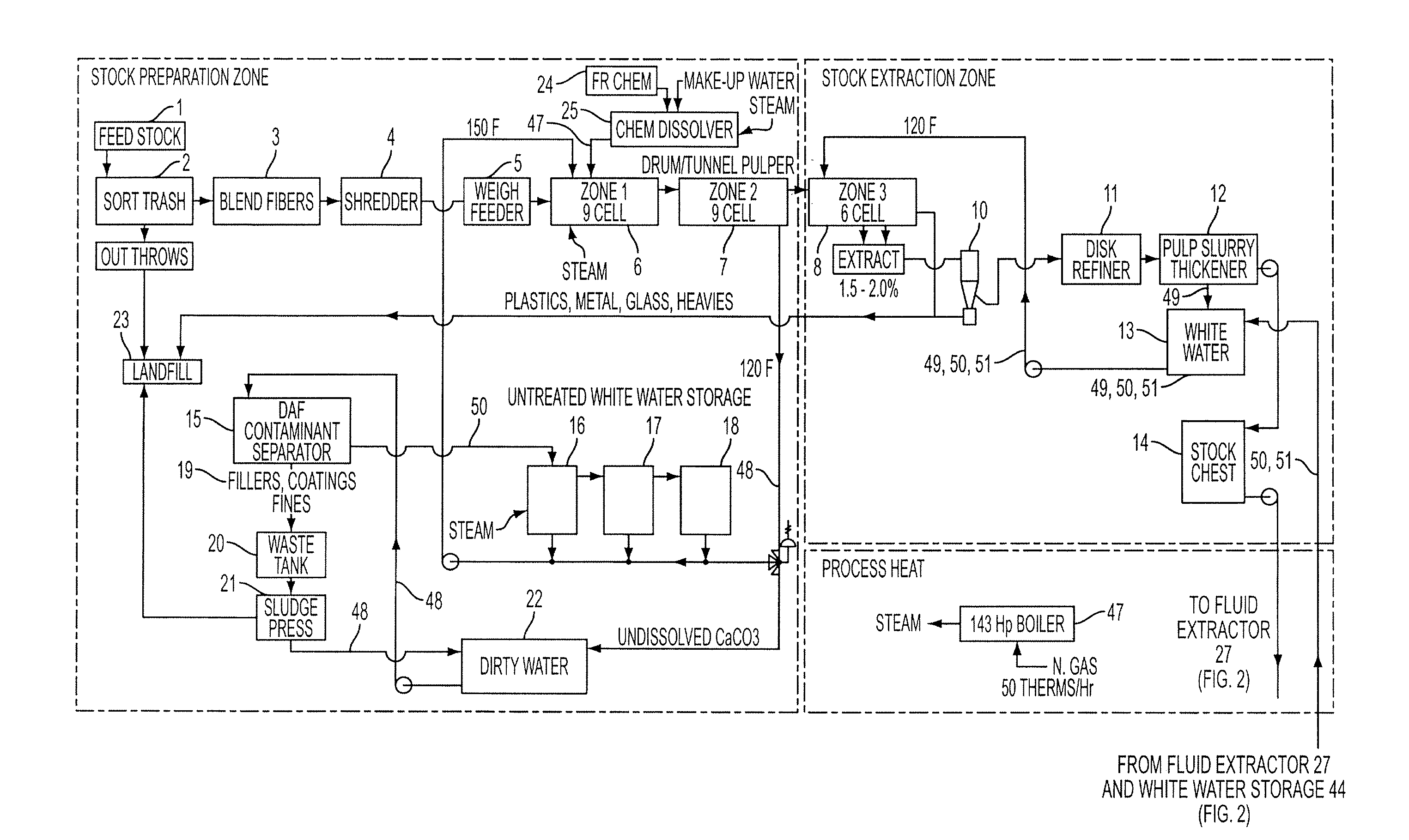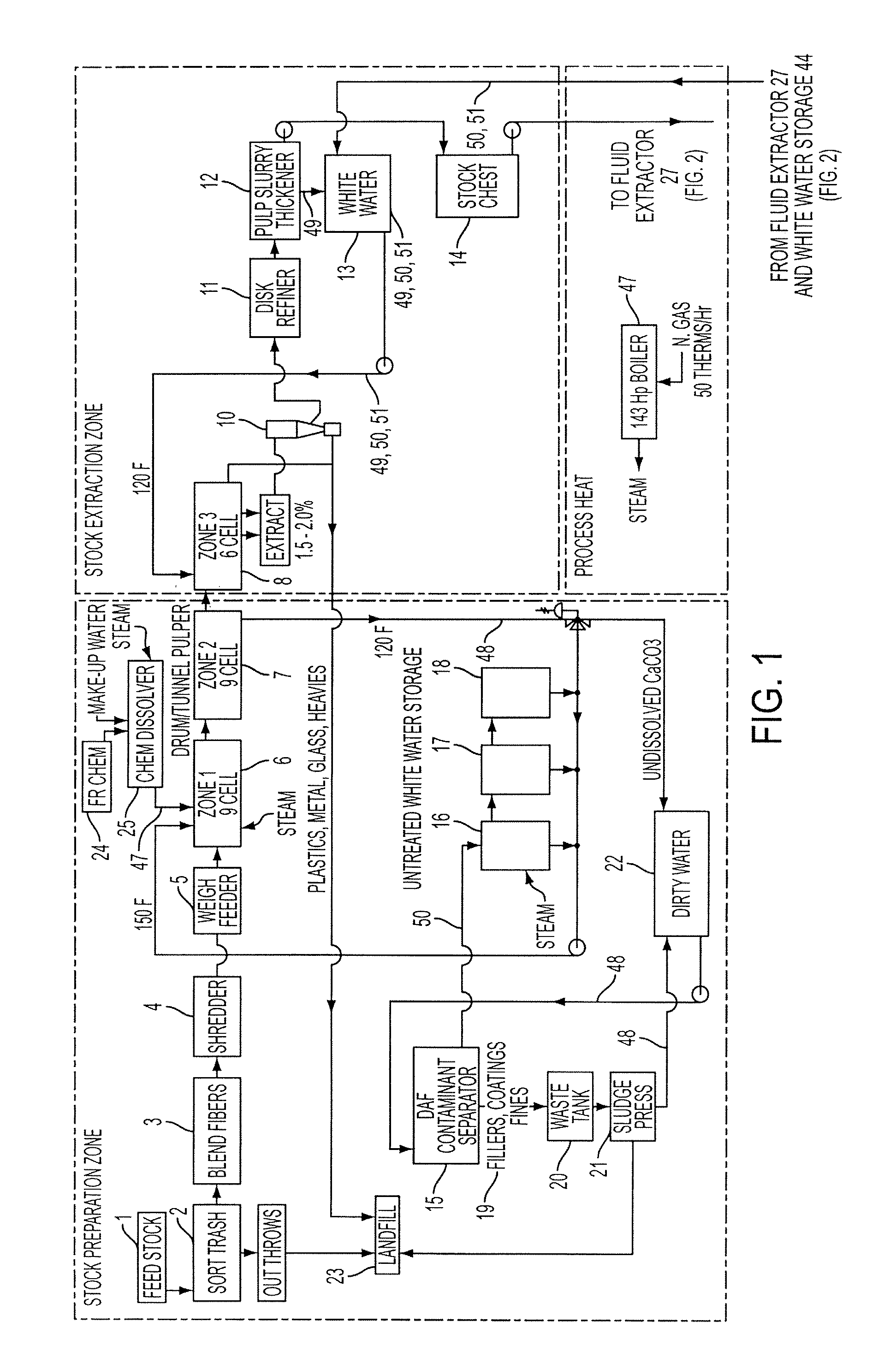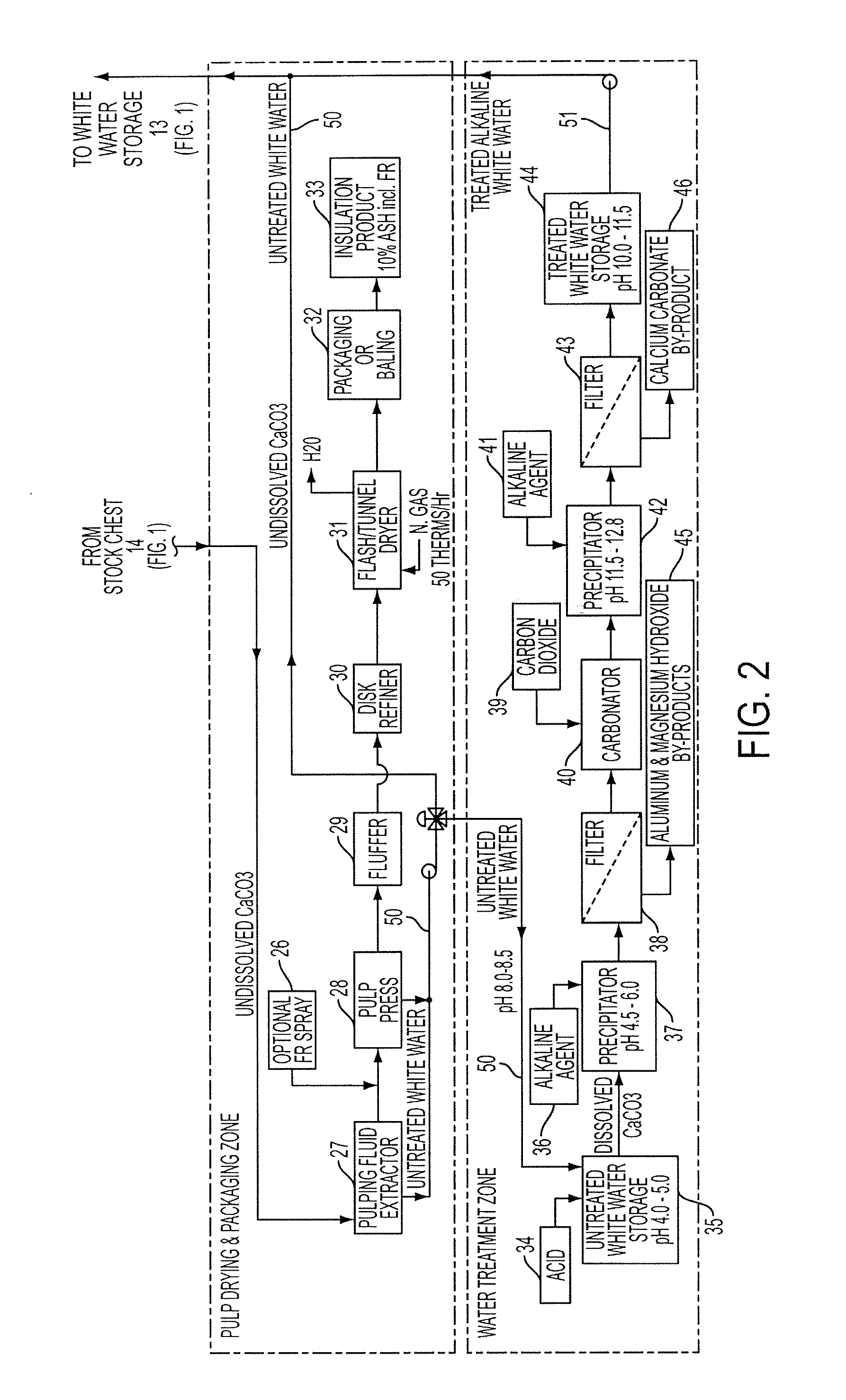In recent years it has become more difficult to obtain clean waste
newsprint at acceptable prices in order to manufacture cellulosic insulation using the common dry manufacturing process mentioned above (which process is currently utilized by the entire U.S. cellulosic insulation market).
In addition, the cost of clean dry waste
newsprint has risen to levels that make it difficult to economically and competitively manufacture acceptable cellulosic insulation.
The most significant challenge facing conventional processes is the quality and composition of ONP.
The addition of various fillers (primarily
calcium carbonate; CaCO3) has caused difficulty for
cellulose insulation manufacturers to maintain good (lower) densities and a low-dust level product.
The measurement of a product's thermal performance (R-value) is hindered by high densities and high levels of
inorganic particles.
Additionally, the advent of single-
stream recycling programs has significantly reduced the availability of high quality ONP, one that is virtually free of contaminants and is dry.
This method has not proven to be successful commercially to produce a
cellulose based
fiber insulation.
Current levels of
calcium carbonate and other fillers along with the increasing use of short fibers (fines) in the recycled
waste paper stream is presenting a major problem for dry process cellulosic insulation manufacturers today.
The manufacture of quality cellulosic
thermal insulation will become increasingly more difficult using the processes and technologies that are available today.
Despite these known approaches, and the increasing need for quality waste products, no commercial process has been developed to produce cellulosic insulation out of
waste paper materials that are contaminated with a high degree of
calcium carbonate, fines, and other non-organic materials (such as plastics, foils, glass,
metal and other non-
organic content), and materials that are contained in, commingled with, or laminated to the cellulosic fibers or waste fibers.
These waste materials are currently sent to a landfill and landfills are becoming increasingly scarce and difficult to build.
In regard to animal and
fowl bedding materials, conventional paper-based bedding frequently contains contaminants that are a result of
poor quality old newspapers.
Since the animals frequently ingest the bedding, some of these contaminants can cause illness and therefore growth issues with the animals.
These tend to not be as absorbent and compact tightly minimizing the thermal advantages.
Conventional paper-based bedding is produced in a dry process using various shredders and hammer-mills, thus making the addition of additives that adequately adhere to the fibers difficult or inefficient.
Conventional processes do not have the capability of managing and therefore reducing the inorganic components of the
raw material.
Excess
moisture in the
litter increases the incidence of breast
blisters,
skin burns, scabby areas, bruising, condemnations and downgrades.
Wet
litter is also the primary cause of
ammonia emissions, one of the most serious performance and environmental factors affecting
broiler production today.
Conventional animal and fowl bedding products have significant disadvantages, as Table I indicates: TABLE IAdvantages and Disadvantages of VariousAnimal and
Fowl Bedding MaterialsPine shavingsPreferred
litter material but becoming limitedand sawdustin supply and expensive in areas.
Hardwood shavingsOften high in
moisture and susceptible toand sawdustdangerous mold growth if stored improperlyprior to use.Pine orUsed successfully but may cause increasedhardwood chipsincidence of breast
blisters if allowed tobecome too wet.Pine orSimilar to chips or shavings in moisturehardwood barkabsorption capacity.
More difficult to maintainsuitable floor temperatures during coldweather brooding.
Moldhay or corn stovergrowth can also be a
disadvantage.Processed paperVarious forms of processed paper haveproven to be good litter material in researchand commercial situations.
Despite these known animal and fowl bedding products, and the increasing need for a high quality, inexpensive and widely available product, limited commercial products or processes have been developed to meet the needs of private and commercial animal owners for animal and fowl bedding.
 Login to View More
Login to View More 


